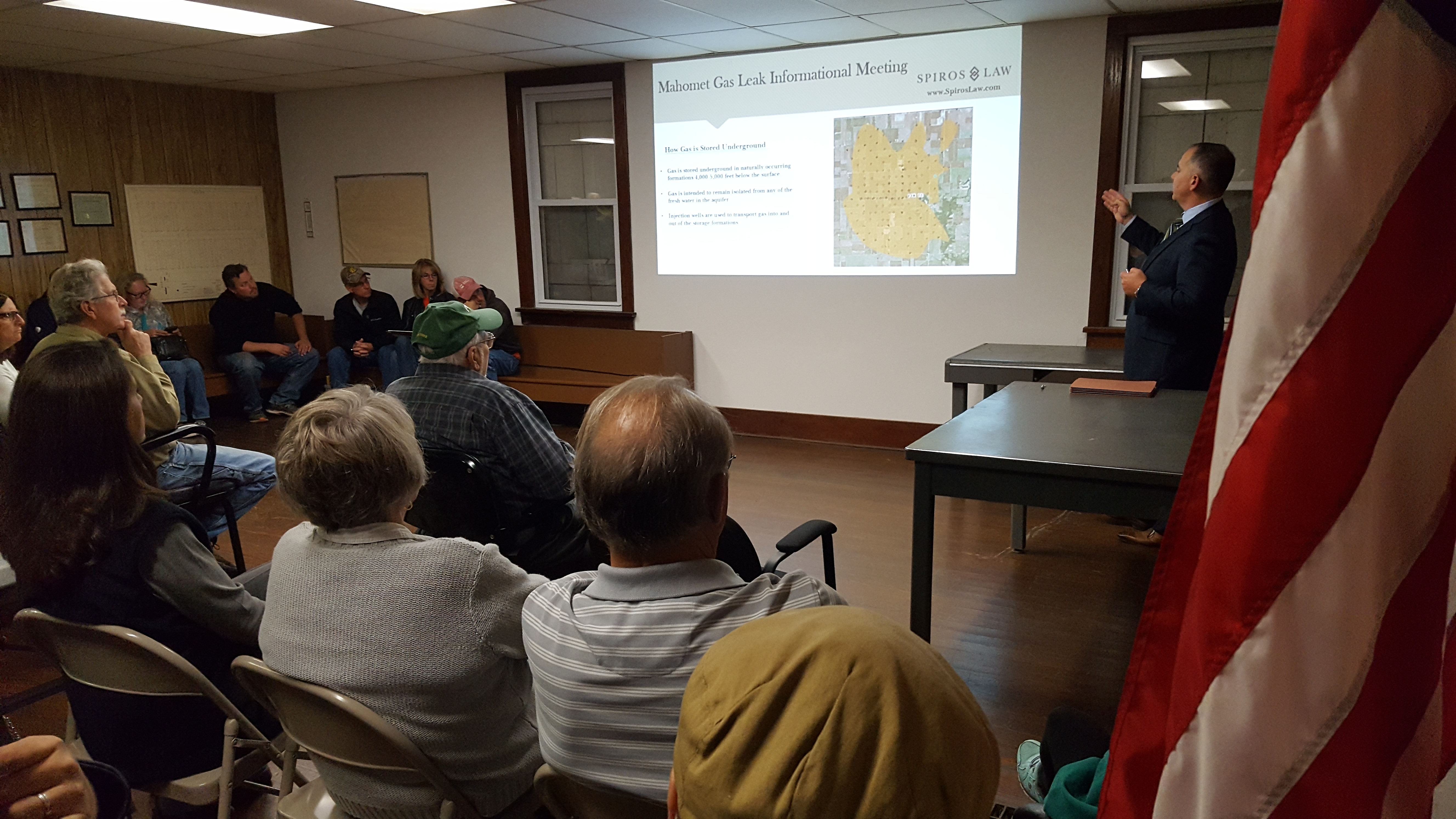
A natural gas leak has contaminated the Mahomet Aquifer, appearing in the drinking water of at least five homes in a rural community between the towns Mahomet and Fisher. One resident was able to set their water on fire.
Spiros Law, the firm representing some of those homes, held an information meeting on Monday night (Oct. 16th) to raise awareness of the situation and the risks to property owner’s water and health. The turnout was far greater than expected, filling the small Newcomb Township Hall to its legal capacity and leaving another hall’s worth of folks waiting outside for an unanticipated second round of the presentation.
One resident put it succinctly: “Say ‘water’ and that means people.”
The Mahomet Aquifer is the sole source designated drinking water source for a significant portion of east-central Illinois. It is just one of many geological formation below our feet. An aquifer is a geological layer that stores water, and the Mahomet Aquifer is exceptionally porous so it stores a lot of fresh drinking water. That’s what makes it so valuable.
Aquifers appear across Illinois in varying types and qualities. The Mahomet Aquifer spans 15 counties and is composed of sand and gravel. This Illinois Groundwater Resources map from the Illinois State Water Survey shows the breadth of the Mahomet Aquifer. The aquifer provides scores of communities with their drinking water.
The company responsible for the leak is People’s Gas, a natural gas delivery company from Chicago. They operate the Manlove field, where natural gas is injected deep underground for storage.
Many layers deeper than the Mahomet Aquifer is a saline aquifer. Salt water isn’t good for drinking, so that aquifer is used for other purposes. People’s Gas found areas where the top layer of the saline aquifer is dome shaped, where they could drill wells deep down into this dome to inject and store natural gas. The gas rises to the top of the dome and collects there. People’s Gas has 150 active and inactive injection wells at this site, storing up to 36.5 billion cubic feet of natural gas approximately 4,000 feet underground.
That’s a lot of natural gas. Imagine a cube that is a half mile long on each side. 36.5 billion cubic feet is still bigger than that.
We don’t know when the leak began. At some point, one of the injection wells, essentially a pipe, broke. People’s Gas reported that the break was approximately 500 feet below the surface. That is inside or just below the Mahomet Aquifer. The gas then rose into the Mahomet Aquifer where it appeared in resident’s drinking water wells. Apparently, natural gas has also been detected at the surface on the company’s property.
According to People’s Gas, the crack in the well was sealed within a week of being found, but we don’t know for how long it leaked or exactly how much gas was released.
The situation is especially dangerous because natural gas is odorless. The rotten egg smell of natural gas is an additive mixed into the gas later so you can detect a leak in your home. The natural gas that escaped did not have this additive.
Storing natural gas in aquifers, while convenient for energy companies, poses potentially catastrophic consequences to the people and communities who rely on the waters that sit above them.
Illinois Department of Natural Resources had initially been working with People’s Gas through a voluntary site clean-up process, but that process broke down when progress was not being made fast enough. IDNR has issued a Notice of Violation to People’s Gas and has referred the case to the Illinois Attorney General’s Office. The Illinois EPA is aware of the situation as well and are deferring to the Attorney General for now. To our knowledge, the lawsuit brought by property owners is in an early stage.
We will keep you posted.







